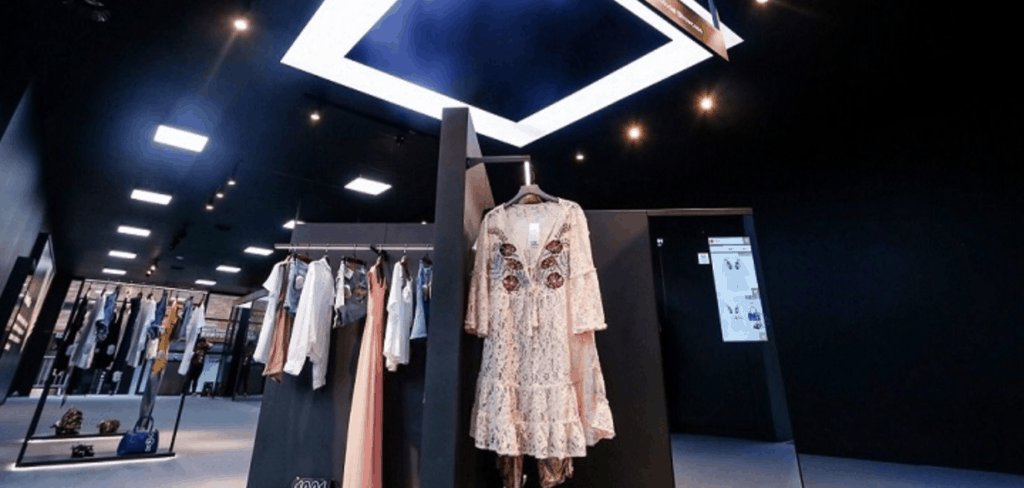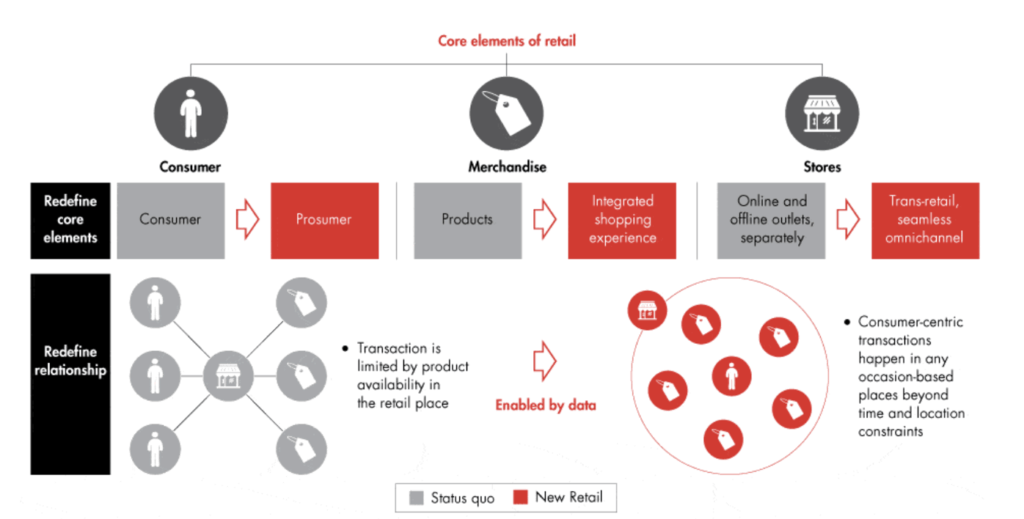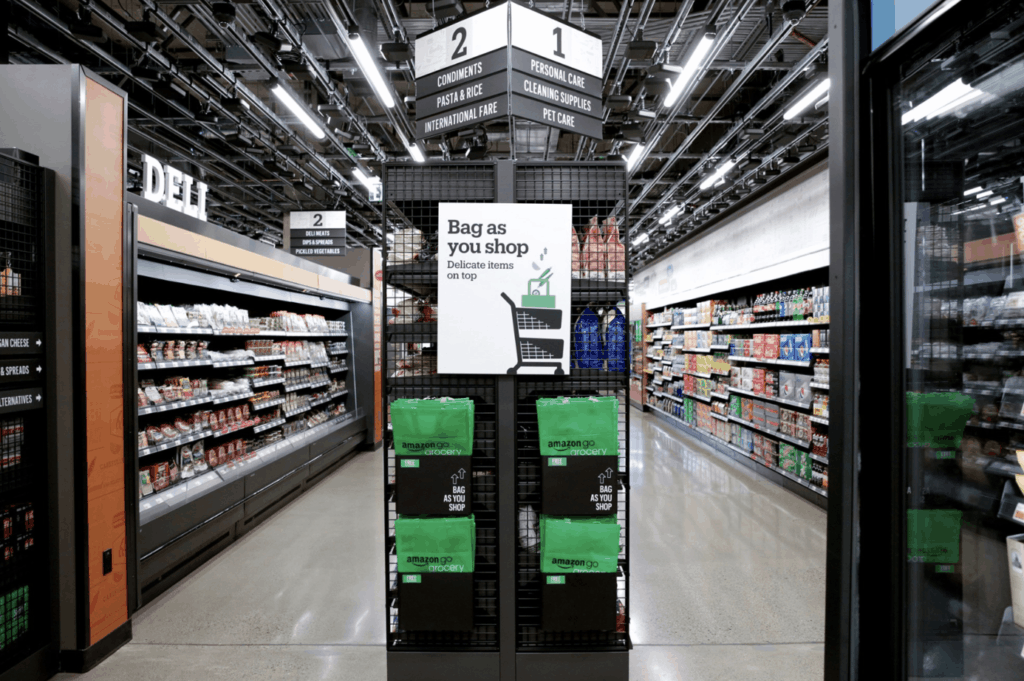The retail industry peaked during the 18th and 19th centuries, where physical spaces were occupied by departmental stores, as well as specialty and retail shops. Fast forward to the 21st century and look at us today — now not only can you shop offline in physical stores, but you can also find a whole new world waiting for you on the digital platform. Hop onto any businesses’ website, any e-commerce aggregator sites like Amazon or Shoppee, or even the social media pages of brands, and you will find yourself landing in an easy and convenient shopping experience all the way till checkout and delivery. Oh how shopping and retail has evolved. However, if you think this is all, think again. With everything going online these days, is this the end of brick-and-mortar stores? Will the proliferation of e-commerce sites drown one another out? With almost identical catalogue-viewing and check-out processes on every site, how does one differentiate itself from competitors?
Introducing: New Retail
New retail offers a whole new shopping experience — one without boundaries — by taking both the online and offline experience, and merging them together (Source: daxueconsulting.com). Introduced by Jack Ma, Alibaba’s executive chairman, this was what he coined as the Five New strategy — New Retail, New Finance, New Manufacturing, New Technology, and New Energy. He wanted this consumer-centric approach to not only transform China but the rest of the world because to him, the future of retail was not just about the channels, but rather the experience itself.
With this concept that was introduced in 2016, the entire customer journey is redesigned in hopes to combine the best of both the online and offline shopping experiences. Thus, the real challenge here that New Retailtries to solve is following the customers through multiple contact points and devices — so as to provide them with a more seamless shopping experience across channels (Source: marketingtochina.com). At the same time, New Retail also aims to give customers a highly personalised, interactive, and convenient retail experience that harnesses the power of new technologies and data science (Source: marketingtochina.com). Brands must recognise that consumers today are no longer traveling to physical stores just to buy a product since that can be done online, they want to have a fun and interactive shopping experience. Through New Retail, brands are now provided with more opportunities to interact with their targeted consumers, and build deeper customer relationships.
Key Factors of New Retail
So what are some factors that make up New Retail?
100% Digital
Everything has gone virtual/digital. Even the very act of browsing through or trying on clothes! For Alibaba’sSingles’ Day in 2018, the brand partnered with several other fashion brands to bring pop-up stores to their consumers. With the use of smart mirrors with AI technology, shoppers could connect to their personal shopping accounts on online retail sites like Taobao, and be offered recommendations on how to mix-and-match in-store items based on trends and style advice that came from Alibaba’s data ecosystem (Source: themds.com).

Once satisfied with their choices, shoppers just had to check-out their virtual cart at the end, which they could pay via their shopping accounts or through facial recognition, and it would be delivered to their homes. With the absence of long queues or checkout counters, this is the new shopping experience.
Data collection
It is no secret that New Retail relies heavily on customer data like their personal particulars, payment information, purchase history, etc. This is to tailor more relevant, personalised recommendations for customers, as well as to save important information for later (such as billing and shipping) to make the check-out experience more seamless.
Instant and immediate
Almost everything is instantaneous — with New Retail, it is possible for customers to scan their desired product in stores, and find that it has arrived at their doorstep later on. This is because New Retail adopts the fashion industry’s See Now Buy Now (SNBN) practice which allows consumers to make immediate purchase of the clothes they see during a fashion show (Source: daxueconsulting.com). The production cycle in this case, is much faster in order to meet the need for immediacy, thus reducing retailers’ risk of excess inventory.
Quality check
In China, product quality is often the biggest concern. Hence, it is often also the top most priority for younger consumers, so much so that they are willing to pay more for better quality. So how does New Retail help with that? One example is Hema supermarket, where consumers can scan a dedicated product QR code, and get information about the product’s entire supply chain leading up to the point in which the products are stocked in-store. Such information includes where the products are sourced from, where they are manufactured, what food safety certificates they have, etc. Hence, leveraging on technology to be more transparent to the consumer, and thus increasing their confidence to purchase with them.
Sensory marketing
Being a consumer-centric approach, this means that New Retail’s customer journey is orchestrated in a way that makes it both a seamless and enjoyable one. As such, in-store products are arranged in an appealing way that prompts consumers to make purchasing decisions faster. Furthermore, the overall in-store experience is also becoming more holistic, dynamic and interactive, in ways that seek to appeal to the 5 senses of customers.
How does New Retail work?
The mindset undertaken in New Retail is that people now are no longer viewed only as consumers. Forward-thinking brands have to see them as co-creators/producers too, or also known as ‘prosumers’. This means that they too have just as much of a say in what they want products to look like, how they want to view and experience them, and where they want to purchase them.

The diagram above explains how New Retail redefines what the three core elements of retail are, and what its relationship with consumers is like (Source: bain.com). Basically with New Retail, customers are no longer limited by a single channel or what is available on it. Consumers now have a reservoir of information at their disposal, whether it be for price comparisons, reviews, where to buy, shipping and delivery times, etc. Purchases are then made based on a combination of what they see online and experience offline, and it can be made anytime, anywhere.
Another example of New Retail in China is Luckin Coffee, which has upped its game in coffee sales by creating demand for a fast and convenient online-to-offline coffee experience. How this works is that customers could order through an app and opt for collection or delivery. As the payment is made through the app, Luckin Coffee’s take-out kitchens are therefore cashierless. Deliveries are then made in a timely fashion and self-collecting customers could just drop in to pick up their cuppas, making it easy and convenient for all.
One other prime example would be Amazon Go – the first cashierless convenience store made possible by the retailer’s “Just Walk Out” technology.

With this new concept, shoppers simply have to scan the app to enter and shop as per usual (Image: theguardian.com). The cool thing is that the in-store cameras and sensors are able to track the items that are being removed from the shelves and added to the customer’s shopping cart. This is then reflected in the shopper’s in-app virtual cart and once the customer is done, all they have to do is walk out of the store with their items. Their virtual cart will automatically check-out using their existing in-app payment method and voila — payment deducted indicating that the purchase has been made! As its name suggests, Amazon Go was designed with convenience in mind, for people who shop on-the-go (Image: nbcnews.com).

With no long waiting lines, this takes the ‘convenience’ in convenience stores to a whole new level. This also frees up the store staff to take care of other aspects like restocking the shelves and offering quality customer service. Today, this same technology is powering over 25 Amazon Go convenience stores (Source: techcrunch.com).
The future of New Retail for brands
Brands today need to start seeing their stores as more than just a physical space for consumers to buy their products. This is why many brands are now transforming their physical stores into experiential ones, almost like an art gallery. If you take a look at Apple’s stores, the products displayed feel like a piece in an art exhibition — where many people would visit to experience and find out more, only to make a purchase online later on.
Just like Apple or Amazon Go, stores of the future have to transform themselves into experiential spaces that consumers would look forward to leaving the comforts and convenience of their homes for. As the needs of customers continue to shift, the retail landscape will likewise only continue to evolve. To keep up and to stay relevant, brands will have to constantly reinvent themselves. Apart from the innovative new ways that they can do business and shape the customer experience, the speed and scale in which they implement these new changes will also be crucial to their success. With all that being said, is New Retail still worth it? Yes, because when done right and done well, this can propel your brand ahead of others — and perhaps even be the next face of New Retail. The consumers of today are well-informed yet easily bored, and are looking for new and novel experiences that excite them. In this digitalised day and age, what better way than to combine both the offline and online, than to give them something new and extraordinary?
— —
Hero image: Clay Banks, Unsplash
